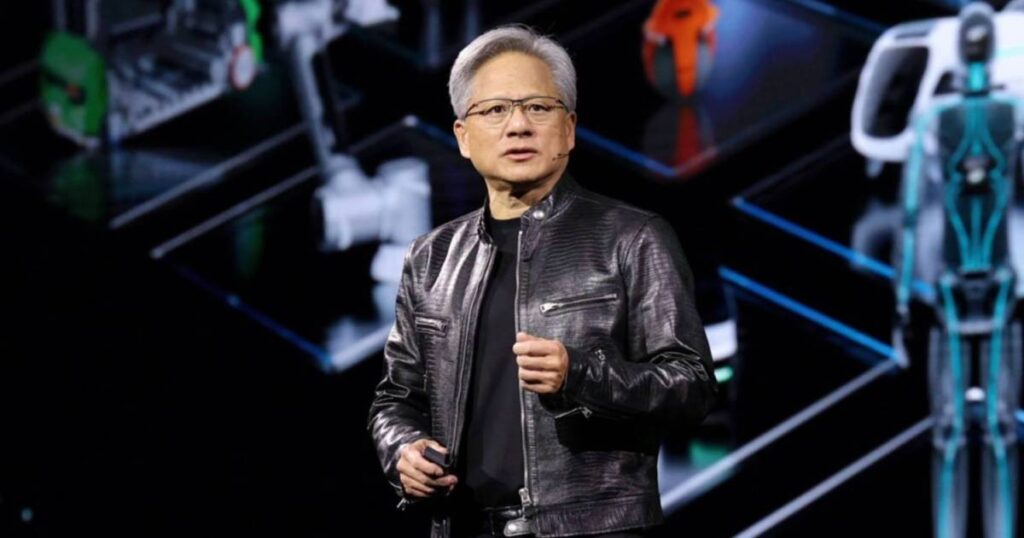Great, below’s the qualified reporter informing me that the $ 2, 000 graphics card won CES 2025 I’ve seen plenty of strong viewpoints about Nvidia’s CES news online, however also neglecting the bloated rate of the brand-new RTX 5090, Nvidia won this year’s show. And it sort of won by default. Between Intel’s barebones announcements and an overstuffed AMD discussion that overlooked what could be AMD’s crucial GPU launch ever, it’s not unusual that Team Environment-friendly came out ahead.
Yet that’s regardless of the crazy rate of the RTX 5090, not due to it.
Nvidia introduced a new range of graphics cards, and the outstanding multi-frame generation of DLSS 4, but its news this year were a lot more substantial than that. Everything comes down to the ways that Nvidia is leveraging AI to make PC games better, and the fruits of that labor might not pay off quickly.
There are the developer-facing devices like Neural Materials and Neural Appearance Compression, both of which Nvidia briefly discussed throughout its CES 2025 keynote. For me, nevertheless, the standout is neural shaders. They certainly aren’t as interesting as a new graphics card, a minimum of on the surface, but neural shaders have enormous effects for the future of PC games. Even without the RTX 5090, that statement alone is substantial enough for Nvidia to swipe this year’s show.

Get your regular teardown of the technology behind computer pc gaming
Neural shaders aren’t some buzzword, though I would certainly forgive you for assuming that given the force-feeding of AI we have actually all experienced over the past couple of years. First, let’s start with the shader. If you aren’t acquainted, shaders are essentially the programs that run on your GPU. Years earlier, you had fixed-function shaders; they could just do something. In the early 2000 s, Nvidia presented programmable shaders that had much higher abilities. Currently, we’re beginning with neural shaders.
Simply put, neural shaders enable developers to include little neural networks to shader code. Then, when you’re playing a game, those semantic networks can be deployed on the Tensor cores of your graphics card. It opens a ton of computing horsepower that, as much as this factor, had fairly minimal applications in PC games. They were really simply fired up for DLSS.
Nvidia has uses for neural shaders that it has revealed so far– the aforementioned Neural Products and Neural Structure Compression, and Neural Glow Cache. I’ll begin with the last one since it’s the most interesting. The Neural Radiance Cache basically permits AI to presume what a limitless number of light bounces in a scene would appear like. Currently, course mapping in real time can just take care of many light bounces. After a certain factor, it becomes too demanding. Neural Brilliance Cache not only unlocks even more realistic lighting with much more bounces but likewise boosts performance, according to Nvidia. That’s because it only needs a couple of light bounces. The remainder are presumed from the neural network.
Similarly, Neural Materials presses thick shader code that would generally be booked for offline making, enabling what Nvidia calls “film-quality” properties to be made in real time. Neural Structure Compression uses AI to texture compression, which Nvidia says saves 7 x the memory as traditional block-based compression without any loss in high quality.

That’s just three applications of neural networks being deployed in computer games, and there are currently big effects for exactly how well video games can run and just how good they can look. It is essential to keep in mind that this is the starting line, also– AMD, Intel, and Nvidia all have AI equipment on their GPUs now, and I believe there will certainly be quite a lot of development on what type of semantic networks can go into a shader in the future.
Perhaps there are fabric or physics simulations that are generally run on the CPU that can be run through a neural network on Tensor cores. Or perhaps you can broaden the complexity of meshes by inferring triangles that the GPU does not require to account for. There are the visible applications of AI, such as with non-playable characters, but neural shaders open a world of unseen AI that makes providing extra reliable, and as a result, more effective.
It’s easy to obtain lost in the sauce of CES. If you were to believe every exec keynote, you would win essentially thousands of “ground-breaking” innovations that barely handle to move a patch of dirt. Neural shaders do not suit that group. There are currently 3 very practical applications of neural shaders that Nvidia is presenting, and individuals much smarter than myself will likely dream up hundreds more.
I need to be clear, however– that won’t come as soon as possible. We’re only seeing the really surface of what neural shaders might be efficient in in the future, and even then, it’ll likely be several years and graphics card generations in the future prior to their influence is felt. Yet when considering the landscape of news from AMD, Nvidia, and Intel, just one business presented something that could truly deserve that “ground-breaking” title, which’s Nvidia.


